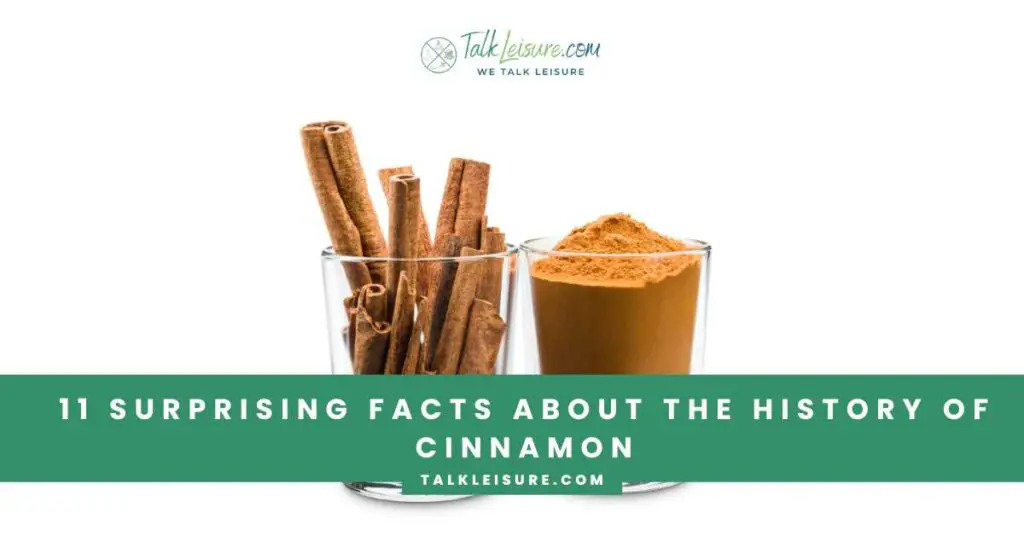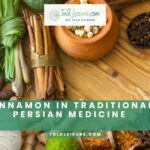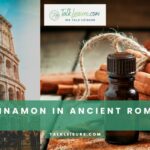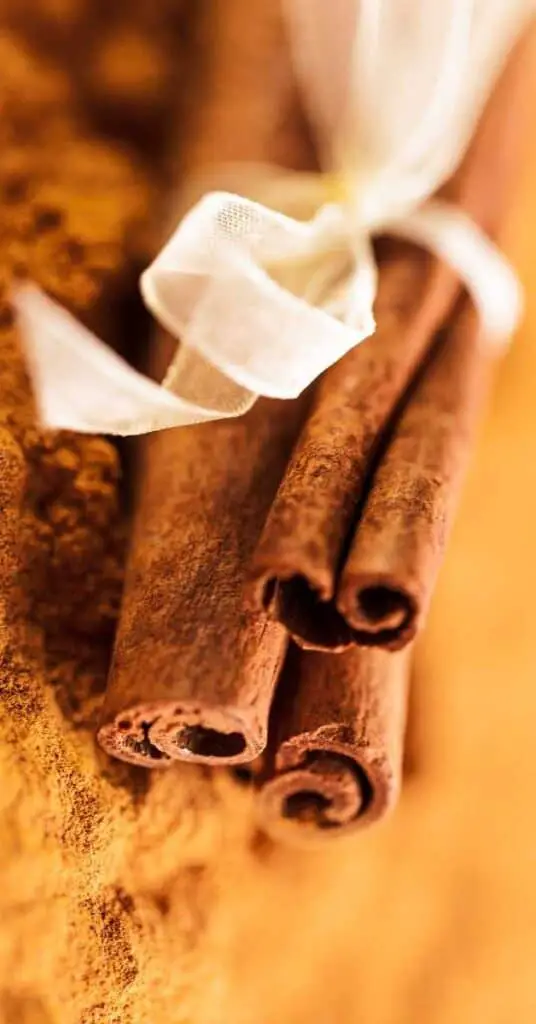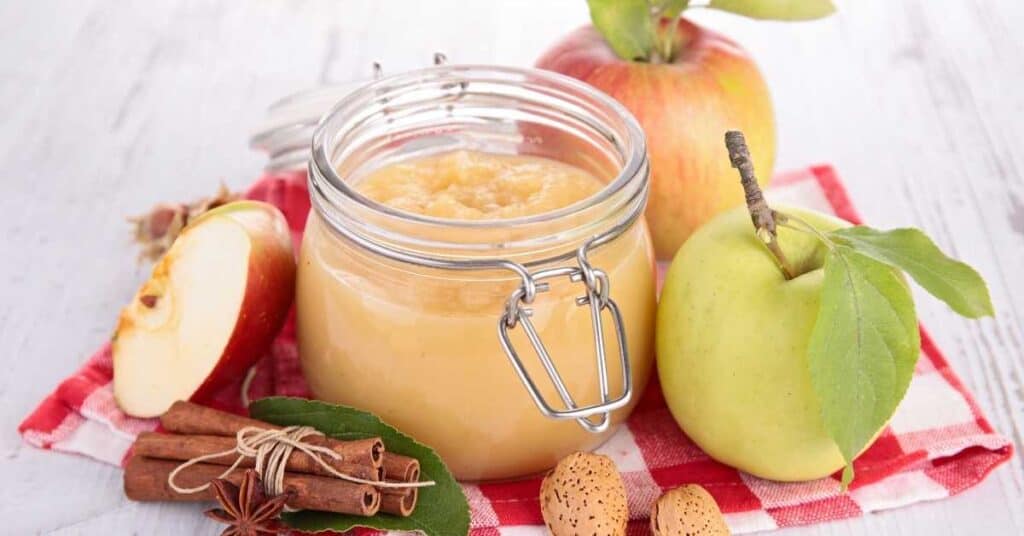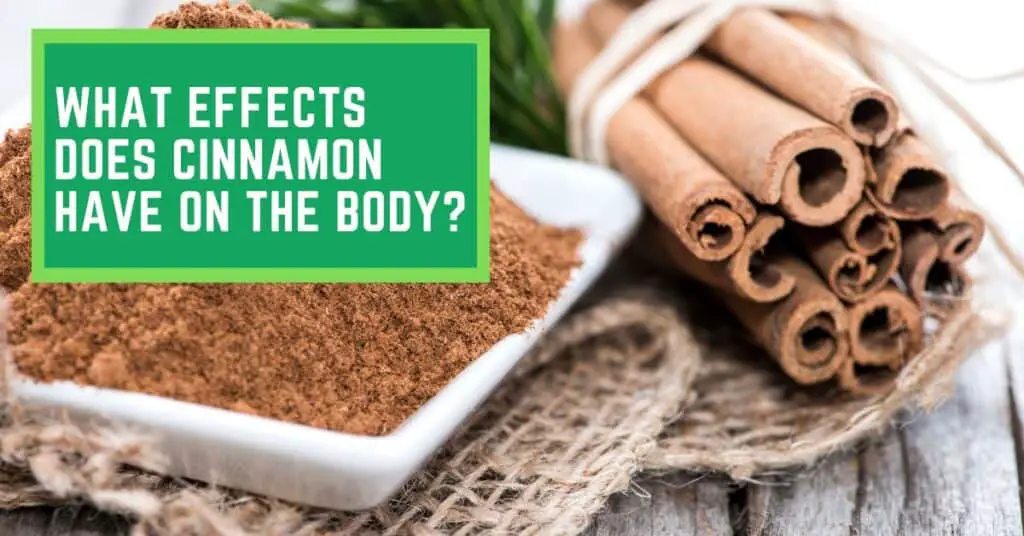Cinnamon is a widely-used spice known for its sweet and warm flavor.
It has been used in cooking and medicine for centuries, and its popularity continues to grow.
In this blog post, we will explore the history and origin of cinnamon, uncovering the secrets behind its intriguing journey. Let’s have a look!
FACT 1- The Mystery Behind Cinnamon’s Origin
The exact origin of cinnamon remains a mystery, but it is believed to have originated in Sri Lanka, then known as Ceylon.
Sri Lanka was once the world’s largest cinnamon exporter and continues to be a major producer to this day.
The spice is obtained from the inner bark of Cinnamomum verum trees, which are native to Sri Lanka.
Cinnamon also grew in other parts of the world, including India, Indonesia, and Madagascar.
These regions have their own unique varieties of cinnamon, each with its distinct aroma and flavor profile.
FACT 2- Cinnamon in Ancient Egypt and China
Cinnamon was highly prized by the ancient Egyptians for its aromatic qualities and its use in embalming rituals. In fact, cinnamon was mentioned in texts dating back to 2000 BCE, with the Egyptians using it not only for mummification but also as a fragrant ingredient in perfumes. This spice was considered a luxury item and was reserved for the wealthy elite.
Cinnamon also had a significant presence in ancient China. The Chinese believed that cinnamon had healing properties and used it in traditional medicine to treat various ailments. It was used as a remedy for digestive issues, respiratory problems, and even as an aphrodisiac. Cinnamon was highly valued and played a crucial role in Chinese culture and medicine.
Throughout history, cinnamon has captured the attention and imagination of various cultures worldwide. From the ancient Egyptians to the Chinese, this spice has been revered for its flavor, fragrance, and medicinal properties. The exact origin of cinnamon remains somewhat mysterious, but it is believed to have originated in Sri Lanka before spreading to other regions such as India, Indonesia, and Madagascar.
FACT 3- Cinnamon in the Spice Trade
Cinnamon’s allure and desirability in ancient times extended far beyond its medicinal and aromatic qualities. Its distinct flavor and aroma made it a highly sought-after spice in the ancient world, leading to its involvement in the lucrative spice trade. Traders from different regions sought to acquire cinnamon to fulfill the demand in their own markets, making it a valuable commodity exchanged on the high seas. The spice trade played a significant role in connecting civilizations and shaping global history.
FACT 4- Cinnamon and the Age of Exploration
During the Age of Exploration in the 15th and 16th centuries, European explorers set sail in search of new trade routes and valuable commodities. Cinnamon was among the spices that motivated these expeditions, as it was highly prized in Europe for its enchanting aroma and flavor. This quest for cinnamon played a pivotal role in the exploration and colonization of new territories, including the discovery of the Americas.
Cinnamon’s journey from its ancient origins in Sri Lanka to its widespread popularity across different continents demonstrates its enduring appeal. Today, cinnamon continues to be an integral part of culinary traditions around the world. Its sweet and spicy flavor adds depth and warmth to a wide array of dishes and beverages, ranging from baked goods to savory stews and even specialty cocktails.
As we enjoy the delightful scent and taste of cinnamon in our kitchens, it is fascinating to reflect on its rich history and the remarkable impact it has had on civilizations throughout the ages. From ancient Egypt to the spice trade and the Age of Exploration, cinnamon has transcended borders and cultures, capturing the hearts and palates of people across time.
FACT 5- Cinnamon in the Roman Empire
Cinnamon’s popularity continued to grow during the Roman Empire, where it became a symbol of wealth and power. The Roman elite prized cinnamon for its luxurious and exotic nature, using it in various culinary and medicinal applications. It was not only used as a spice but also in perfumes, cosmetics, and religious rituals. The demand for cinnamon in Rome was so high that it led to the establishment of new trade routes and the development of a vast network of merchants and suppliers.
FACT 6- Cinnamon in Medieval Europe
During the medieval period, cinnamon remained highly valued in Europe. It was imported from the East and became a staple in royal and noble households. Its scarcity and high cost made it a status symbol, often associated with wealth, luxury, and sophistication. Cinnamon was used to flavor a variety of dishes, including meat, poultry, and desserts. Its aromatic properties were also utilized in making fragrances, candles, and herbal remedies.
Cinnamon’s journey through history is a testament to its enduring allure and impact. From its involvement in the spice trade to its association with power and wealth in ancient empires, cinnamon has played a significant role in shaping culinary traditions and cultural exchange. Today, cinnamon continues to be cherished and enjoyed worldwide for its distinctive flavor and aromatic qualities. Whether used in traditional recipes or innovative creations, this spice continues to captivate our senses and connect us to the rich tapestry of our shared culinary heritage.
FACT 7- Cinnamon as a Natural Remedy
Cinnamon has been used for centuries as a natural remedy for various health conditions. Its active compounds, such as cinnamaldehyde, cinnamic acid, and eugenol, have been found to have anti-inflammatory, antioxidant, and antimicrobial properties. Here are some of the ways cinnamon can be used as a natural remedy:
- Digestive health: Cinnamon has been traditionally used to aid digestion and relieve gastrointestinal discomfort. It can help reduce gas, bloating, and indigestion.
- Blood sugar control: Studies have shown that cinnamon may help improve insulin sensitivity and regulate blood sugar levels. It may be especially beneficial for individuals with diabetes or insulin resistance.
- Heart health: Cinnamon has been linked to potential cardiovascular benefits. It may help lower blood pressure, reduce cholesterol levels, and improve overall heart health.
FACT 8 – Cinnamon’s Role in Traditional Medicine
In addition to its use as a natural remedy, cinnamon has played a significant role in traditional medicine systems around the world. Here are some examples:
- Ayurveda: In Ayurvedic medicine, cinnamon is believed to have warming properties and is used to balance the doshas, promote circulation, and support respiratory health.
- Traditional Chinese medicine: Cinnamon is used in traditional Chinese medicine to invigorate qi (life force energy), warm the body, and promote healthy digestion.
- Indigenous cultures: Cinnamon has been used by various indigenous cultures for its antimicrobial properties and as a treatment for infections, colds, and flu.
While cinnamon’s medicinal uses are well-documented, it’s important to note that it should not replace professional medical advice. It’s always best to consult with a healthcare provider before using cinnamon or any other herbal remedy for therapeutic purposes.
Cinnamon’s rich history as a symbol of wealth and power in ancient civilizations, combined with its medicinal properties, make it a truly remarkable spice that continues to be valued and cherished today.
FACT 9- Cinnamon in the American Revolution
During the American Revolution, cinnamon played a significant role in the lives of the colonists. The British Empire heavily taxed the importation of many goods, including spices like cinnamon. As a result, cinnamon became a symbol of resistance for the colonists, who boycotted British goods. They sought alternatives to the British imports and learned to use more locally available spices.
Cinnamon was used sparingly in American cooking during this time, but it still remained a cherished and sought-after spice. Its warm and aromatic flavor was used to enhance the taste of baked goods, mulled beverages, and even savory dishes like stews and soups. The colonists valued cinnamon not only for its taste but also for its medicinal properties, as they believed it could help with indigestion and other digestive issues.
FACT 10- Cinnamon’s Impact on the Spice Industry
Cinnamon has had a lasting impact on the spice industry throughout history. Its popularity has led to the establishment of trade routes and spice markets worldwide. The demand for cinnamon was so high that it sparked exploration and colonization.
Cinnamon cultivation began in Sri Lanka (formerly Ceylon) and quickly spread to other regions such as India, Indonesia, and Madagascar. The spice trade became a major economic driving force, leading to the formation of powerful trading companies and the construction of elaborate spice routes.
Today, cinnamon is still one of the most widely used and traded spices globally. It is grown in many countries, with Sri Lanka and Indonesia being the leading producers. The spice industry continues to thrive, offering a variety of cinnamon products such as ground cinnamon, cinnamon sticks, and cinnamon essential oil.
Cinnamon’s journey from ancient civilizations to the modern era is a testament to its enduring appeal and versatility. Whether used as a symbol of resistance, a natural remedy, or a flavorful ingredient, cinnamon continues to be a beloved spice that enriches our lives and connects us to the past.
FACT 11- Cinnamon Cultivation Today
Cinnamon cultivation is still a thriving industry in the present day. The demand for this beloved spice continues to grow, and it is now cultivated in many countries around the world.
Sri Lanka and Indonesia are the leading producers of cinnamon, with other countries like India, Vietnam, and China also contributing to its production. The ideal climate for growing cinnamon includes tropical regions with a good amount of rainfall and well-drained soil.
Modern cinnamon cultivation involves careful tending of the cinnamon trees. The bark of the tree is the part that is harvested for cinnamon production. Farmers carefully remove the outer bark and then delicately peel off the inner bark, which curls into the familiar cinnamon sticks. This process requires precision and skill to ensure the quality of the cinnamon.
Conclusion
The cultivation of cinnamon has undergone significant advancements from its ancient origins. It remains an extremely sought-after spice that adds warmth and flavor to countless dishes.
The modern cinnamon industry thrives through sustainable practices, guaranteeing a steady supply of this beloved spice for culinary and medicinal purposes.

